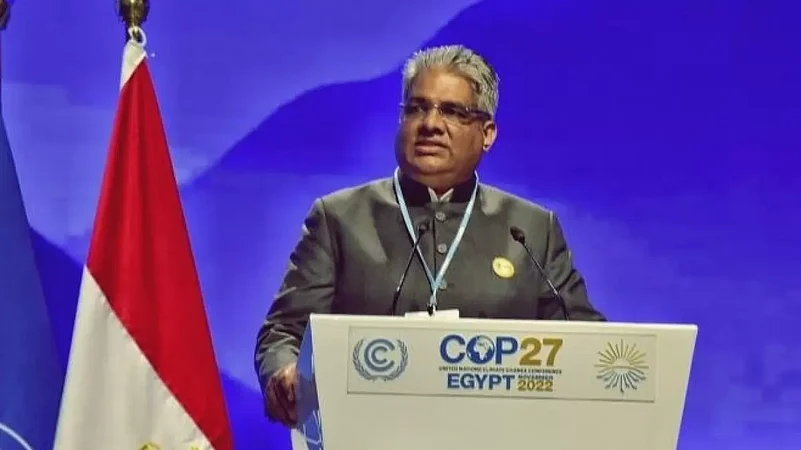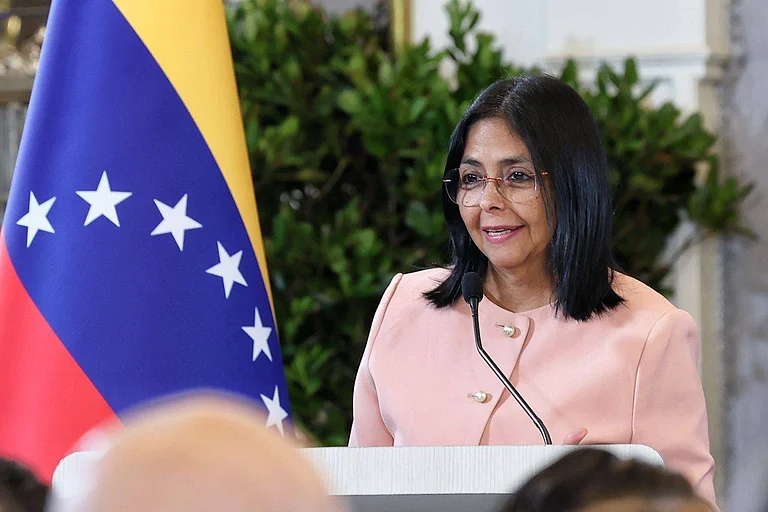A first formal draft of the UN climate summit deal in Egypt was published on Friday, yet again leaving out India's call for phase down of all fossil fuels and without any proposal on loss and damage funding.
The draft text on COP 27's overarching decision puts a "placeholder" on funding arrangements to address loss and damage, which means parties are yet to reach a consensus on the matter. Furthermore, experts said it is surprising that the call for phasing down all fossil fuels didn't find a place in the draft text despite most developing countries and some developed nations, including the US, and the European Union supporting it.
What does the draft COP27 Climate Declaration say?
It "encourages the continued efforts to accelerate measures towards the phase down of unabated coal power and phase out and rationalize inefficient fossil fuel subsidies, in line with national circumstances and recognizing the need for support towards just transitions".
To this end, the draft reaffirms that limiting global warming to 1.5 degrees Celsius requires rapid, deep and sustained reductions in global greenhouse gas emissions, including reducing global carbon dioxide emissions by 45 per cent by 2030 relative to the 2010 level and to net zero around mid-century, as well as deep reductions in other greenhouse gases.
What is Loss and Damage?
Loss and damage refer to the consequences of climate change that go beyond what people can adapt to, or when options exist but a community doesn't have the resources to access or utilize them.
Financing or a new fund for addressing loss and damage -- for example money needed for relocating people displaced by floods -- has been a long-pending demand of poor and developing countries, including India. But rich countries have avoided discussions on it for over a decade.
The loss and damage debate is premised on the Polluter Pays principle and the principle of Common but Differentiated Responsibilities wherein the developed nations who are historically responsible for emissions must support developing and least developed nations in adapting to losses due to climate change. At the core of it, the loss and damage debate is centered around climate justice.
Losses can be both economic as well as non-economic, in terms of loss of lives, destruction to cultural heritage, migration and displacement, and health impacts due to climate induced disasters. In fact, the recent floods in Pakistan, droughts in the Horn of Africa region, severe heat waves across Europe led the loss and damage debate on COP’s agenda for the first time.
Why are developed nations expected to finance climate costs?
The climate disruptions that the world is experiencing today is attributable to greenhouse gas emissions since 1850, referred to as the era of industrial revolution. The United States and the European Union, including the UK, account for over 50 per cent of all emissions during this time.
At present, even when India is the third largest emitter, it accounts for only 3 per cent of historical emissions, while China, globally the largest emitter since 15 years, is responsible for only about 11 per cent to total emissions since 1850.
Since greenhouse gases such as carbon dioxide, methane, nitrous oxide etc. are highly persistent and circulate in the atmosphere for hundreds of years, historical responsibility becomes a significant determinant in assessing the extent of losses caused by each particular emitter.
Why are the rich, developed nations opposing it?
Ascertaining loss and damage compensation, or more simply, the climate reparations to be paid to developing nations, is likely to burn a huge hole in the pockets of rich nations. For instance, according to a recent report by the UN Office for the Coordination of Humanitarian Efforts (UNOCHA), yearly funding requests related to climate-induced calamities were approximately USD 15.5 billion in the three-year period between 2019 and 2021.
The supercyclone Amphan in India in 2020 alone caused an estimated damage of USD 15 billion. In fact, as per UNFCCC estimates, annual economic losses from climate change were projected to reach somewhere between USD 290 billion to USD 580 billion by the year 2030.
The key concern is that it is difficult to scientifically assess the extent of damage caused solely due to climate change and even more ardous a task to calculate a fair compensation amount.
Resultantly, most developed nations have shied away from committing billions of dollars in climate reparations to poorer nations. However, some countries including Canada, Denmark, Germany, New Zealand, Scotland and the Belgian province of Wallonia have all expressed interest in loss and damage financing.
Is COP27 the first attempt at demanding loss and damage compensation?
Ever since the UNFCCC was instituted in the 1990s, establishing accountability and compensatory mechanisms for loss and destruction to climate has been a long fought battle for the least developed countries who are the most vulnerable to impact of climate disasters.
In 2013, the Warsaw International Mechanism (WIM) on Loss and Damages was brought about after persistent efforts by developing nations. However, this focused on sharing technical expertise, knowledge sharing, and dialogue avenues. No monetary compensation was offered under the mechanism
Meanwhile, in 2009, the developed nations committed to provide USD 100 billion by 2020 to finance climate adaptation amongst developing nations, but this promise has so far remained only on paper.
Furthermore, at the COP26 last year in Glasgow, a 3-year task force was set up to formulate a funding arrangement for loss and damage.
Against this backdrop, developing nations led by India pushed for climate financing at the COP27. In fact, the debate is all the more crucial for India, since as per the Global Climate Risk Index, published by global environmental thinktank GermanWatch, the country is amongst the top 10 most vulnerable countries when it comes to severe climate induced disasters.
(With inputs from PTI)


























